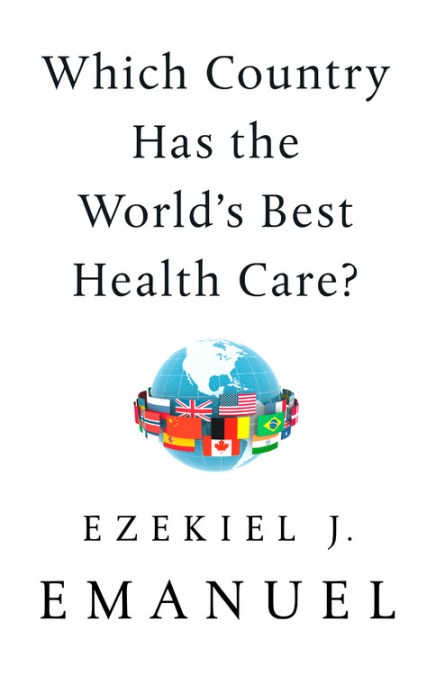Choosing Wisely. Helping Physicians and Patients Make Smart Decisions About Their Care
Fa poc em demanaven que m'expliqués millor sobre el professionalisme. Els que llegiu
aquest blog ja sabeu que em refereixo a tres grans opcions per a millorar l'eficiència: Estat, mercat i professionalisme. Es tracta d'opcions no excloents, sino que són complementàries, només cal triar tant sols la dosi acurada. I precisament en la dosi és on ens podem passar de frenada o quedar-nos curts.
I en referència al professionalisme, ara fa 10 anys que l'American Board of Medicine va publicar
Medical Professionalism in the New Millennium: A Physician Charter. Cal recordar el que diu al principi:
Professionalism is the basis of medicine's contract with society. It demands placing the interests of patients above those of the physician, setting and maintaining standards of competence and integrity, and providing expert advice to society on matters of health. The principles and responsibilities of medical professionalism must be clearly understood by both the profession and society. Essential to this contract is public trust in physicians, which depends on the integrity of both individual physicians and the whole profession.
At present, the medical profession is confronted by an explosion of technology, changing market forces, problems in health care delivery, bioterrorism, and globalization. As a result, physicians find it increasingly difficult to meet their responsibilities to patients and society. In these circumstances, reaffirming the fundamental and universal principles and values of medical professionalism, which remain ideals to be pursued by all physicians, becomes all the more important.
The medical profession everywhere is embedded in diverse cultures and national traditions, but its members share the role of healer, which has roots extending back to Hippocrates. Indeed, the medical profession must contend with complicated political, legal, and market forces. Moreover, there are wide variations in medical delivery and practice through which any general principles may be expressed in both complex and subtle ways. Despite these differences, common themes emerge and form the basis of this charter in the form of three fundamental principles and as a set of definitive professional responsibilities.
I els tres principis:
Principle of primacy of patient welfare. This principle is based on a dedication to serving the interest of the patient. Altruism contributes to the trust that is central to the physician–patient relationship. Market forces, societal pressures, and administrative exigencies must not compromise this principle.
Principle of patient autonomy. Physicians must have respect for patient autonomy. Physicians must be honest with their patients and empower them to make informed decisions about their treatment. Patients' decisions about their care must be paramount, as long as those decisions are in keeping with ethical practice and do not lead to demands for inappropriate care.
Principle of social justice. The medical profession must promote justice in the health care system, including the fair distribution of health care resources. Physicians should work actively to eliminate discrimination in health care, whether based on race, gender, socioeconomic status, ethnicity, religion, or any other social category.
Doncs bé, ara més que mai crec que el professionalisme ha de suplir l'ineficàcia de l'Estat i els desequilibris del mercat per tal de resoldre les dificultats del sistema de salut. Ho ha de fer ajustant-se a aquests principis i cal aplicar-los en totes les seves implicacions. Quan el dilluns a Els Matins de TV3 preguntaven sobre els pacients que demanen als metges que els precriguin medicaments, la resposta ha de ser només una, aplicar els tres principis, i si no afegeix salut, no cal prescriure perquè ja s'ha saltat el primer. Una actitud condescendent o que hi ha poc temps per visita, esdevenen excuses allunyades d'aquests principis.
Des del
JAMA, m'han donat la pista per aquesta reflexió, i aquest primer paràgraf el podeu aplicar també per al nostre país, encaixa la mar de bé:
The polarizing political environment makes it difficult to conduct
rational public discussions about this issue, but
clinicians and consumers can change the nature of this debate to the
potential
benefit of patients, the medical profession, and the
nation. The initial focus should be on overuse of medical resources,
which not only is a leading factor in the high level
of spending on health care but also places patients at risk of harm.
PS. En economia de la salut aquest tema del professionalisme es tracta malauradament d'esquitllada. L'econometria cau lluny i per parlar d'eficiència és més còmode pensar en metodologies (DEA et al.) que en decisions clíniques professionals que resulten difícils de modelitzar. Ens caldrà fer un esforç a tots plegats per canviar la situació.
PS. Per tal de conèixer millor què són les Health Insurance Exchanges, mireu aquest
blog, el dels estudiants de la BGSE.
PS. Aquells que no vau poder seguir la meva intervenció a Els Matins de TV3,
la trobareu aquí.



